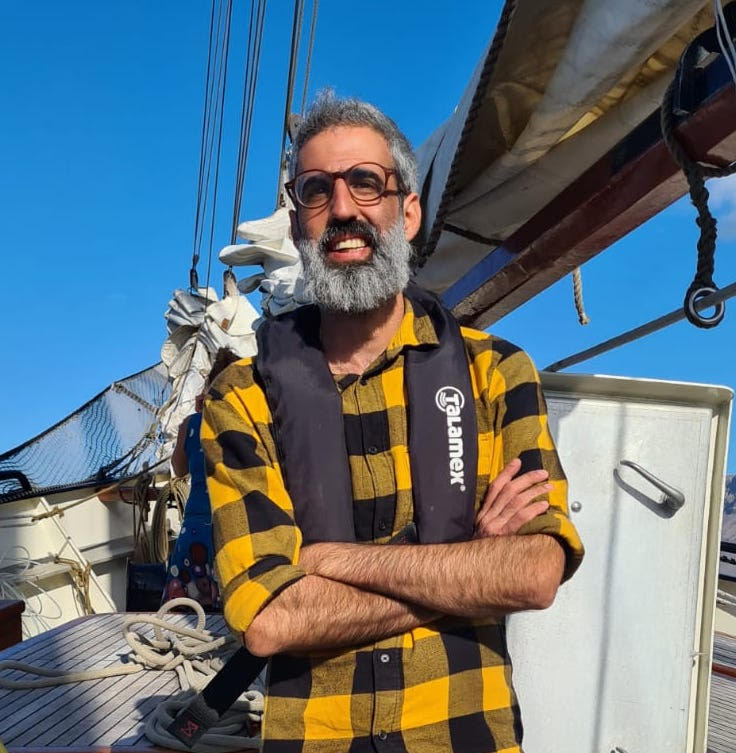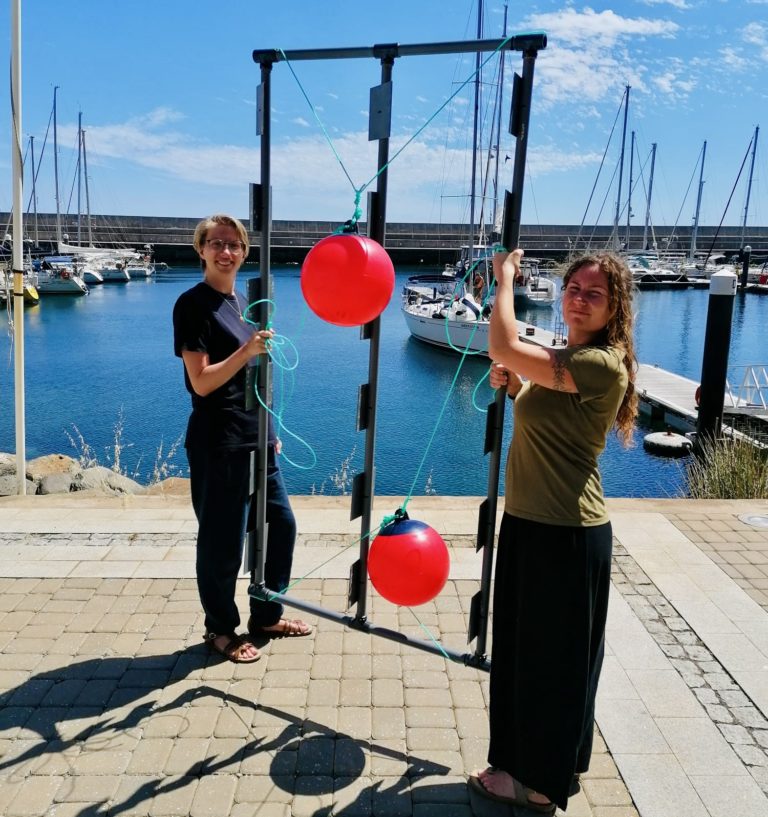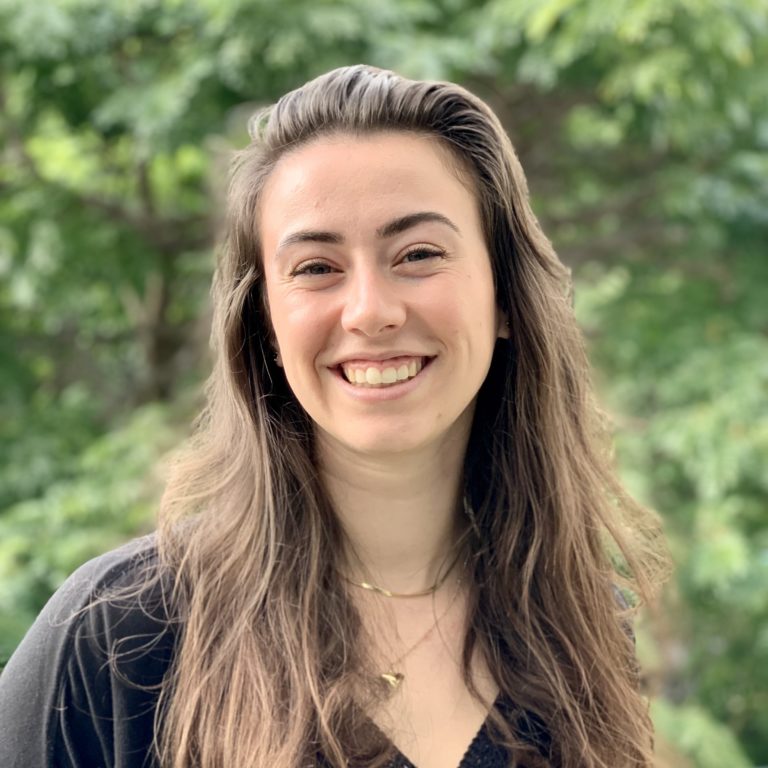Meet the Team: Sílvia Almeida
“I did my Bachelor’s, went to work for a company and after a while I thought, ‘Okay, it’s time to evolve more.’ So I came back to research and did my Master’s. After that I went back to industry until, when I felt it was time, I returned to research — to evolve more, to move forward.”
Sílvia Almeida
The first in our ‘Meet the Team’ series, PhD student Sílvia Almeida shares what got her interested in the ocean, how machine learning is aiding science and how anyone can learn to fix her own car!

What got you interested in science?
When I was very small, I used to visit my grandfather on his farm. During the day, he wouldn’t let me work on the farm, so he put Jacques Cousteau on the TV. I loved those shows. Watching Jacques Cousteau explore underwater, I wanted to explore, too. Science gives you that opportunity – to explore, to do something new, to create something. It is quite amazing. I value that opportunity each time I come back to science.
What did you most want to explore?
I love engineering — robotics, mechanics, electronics. But I come from a very traditional family. For my father, girls don’t work on robotics or mechanics. Oceanography was the closest degree related to robotics and the ocean that I could do that would fit with those traditional views. So I did oceanography for my Bachelor’s.
Where did that take you?
Oceanography is a field that’s almost dead, unfortunately. Or it was. These days, now that the EU has started putting money in ocean research, I have emails everyday saying, “Oo you know something about oceanography?” because there aren’t enough people with this degree. But back then, no one was interested. There were only 6 of us on the course and our instructors were very honest with us – they said you need to create a CV that works for science and for business. Looking back, I think it was the best thing I did. Now, I can easily go into science or work in a company. I can easily move around and I like to have that freedom.
Where did you go first?
When I graduated, it was the recession in Portugal. There were no jobs for anyone. I worked in a restaurant, I did tutoring. Eventually, I saw jobs coming up in GIS (geographic information systems). I saw the ads and I thought, it’s mathematics and programming. I like that, that’s something I can do. So I did a Master’s in GIS at night while working during the day.

After that, I did GIS assessments in the city hall for a couple years. But city halls are very conservative places — new technologies are not easily accepted. So I moved on and took a short-term position as a math and science teacher. I loved it. I was teaching math to 5th to 9th graders, and I even started a robotics club at the school.
One day, one of the engineering teachers in the robotics club said, “You’re good at this. We’re starting a group to offer consultations to companies. Would you like to learn more?” and I said, “YES PLEASE.”
Engineering was still the dream?
Yes. I really like it. At that point, it was just a hobby, though. Like fixing my car.
You taught yourself to fix your car?! How?
[Laughs] I really like watching Youtube videos on electronics and mechanics. If I need to fix something on the car, I go to Youtube. I always check with a mechanic first – Can I do this? Can I do that? What do I need to be careful about? You just need to ask the right questions. Then you do it.
Okay, that’s super cool. A Bachelor’s in oceanography, a Master’s in GIS and YouTube University for DIY car repairs. And then — robotics consulting?
Yes, I consulted for a company that uses robotic arms to create car parts. Soon, it turned into a full-time contract at the company. I was programming the robots and doing the mechanics and maintenance. It was really fast-paced and a very cool job, very hands on. I loved it.
In my second year, they invited me to be the team leader of the morning shift. It was demanding and I evolved a lot from that. I learned that people want and need goals — not just tasks. I also learned that you can’t talk to 72 people the same!
You were managing 72 people?!
Yes. [Laughs some more] I was very afraid at first, but then I decided, ‘I can do this’.
Tell me how you go from managing 72 people and loving your job to doing a PhD developing artificial intelligence for marine science.
As I said, I really loved my job. I felt challenged and happy and I was delivering results. But one day my boss came to me and said, “Thank you for your service, but there’s an MIT PhD engineer coming. We’re replacing you for him.” They said I didn’t have the degree to justify outranking him and so they demoted me.
A week later, my boss admitted that it wasn’t going well and said I needed to train this MIT PhD engineer to do my job. So I said thank you, but no thank you, and left.
When someone comes to me and says, “You don’t have the qualifications to justify your position,” I start thinking, ‘Well, how can I fix that?’ So I started looking into PhDs and soon found MARE-Madeira.
Why did you choose marine research for your PhD?
I still love oceanography and the deep sea. Jacques Cousteau, remember? That’s where it all started. Working in the deep sea would be a dream come true. I was also looking for ways I could apply my degree in GIS, and this was a good fit for both.

What is your PhD focused on?
Something I’m really passionate about: workflows. How you can be the most efficient at something. The world is growing so much in digital technology, we’re collecting so much data and so many types of data. For a normal marine researcher without an IT background, it’s demanding. It would take weeks, sometimes years to process it all. My PhD, then, is creating workflows to help speed up data analysis in marine research.
My first topic is marine litter. Plastic is everywhere and recording it, quantifying it, identifying its materials — it’s a big challenge. Taking drone footage of the open ocean, we created photomosaics and AI/machine learning programs to count and classify different types of pollution from these images. The results from this can be used to help prioritize where clean-up programs need to happen.
Does that flow well? The application of these sorts of findings to real life or policy changes?
Not really. That’s my handicap with science. You work on amazing stuff sometimes, and you have these tools that can be so useful for government or companies. But governments, companies and science rarely work together. From what I’ve seen, governments or companies hire people to come and create exactly what academic scientists have already created.
What can be done to change that?
I think MARE-Madeira is doing a huge concept of change on this. We’re already working with the governments and embracing this concept of science to be more cooperative. I’m very proud to be part of MARE-Madeira because of that.
What’s the coolest thing that robotics can do for us?
What’s most interesting about the ocean — it’s a very famous idea — is that we know more about the moon than we know about our ocean. This highlights how difficult and demanding an environment the deep sea is, and how much we still need to invest to understand our planet and its threats. That’s exciting, because robotics and AI allow you to go there. It’s not easy, though — it will require us to be more and more and more creative. I hope I can be a part of that journey.



